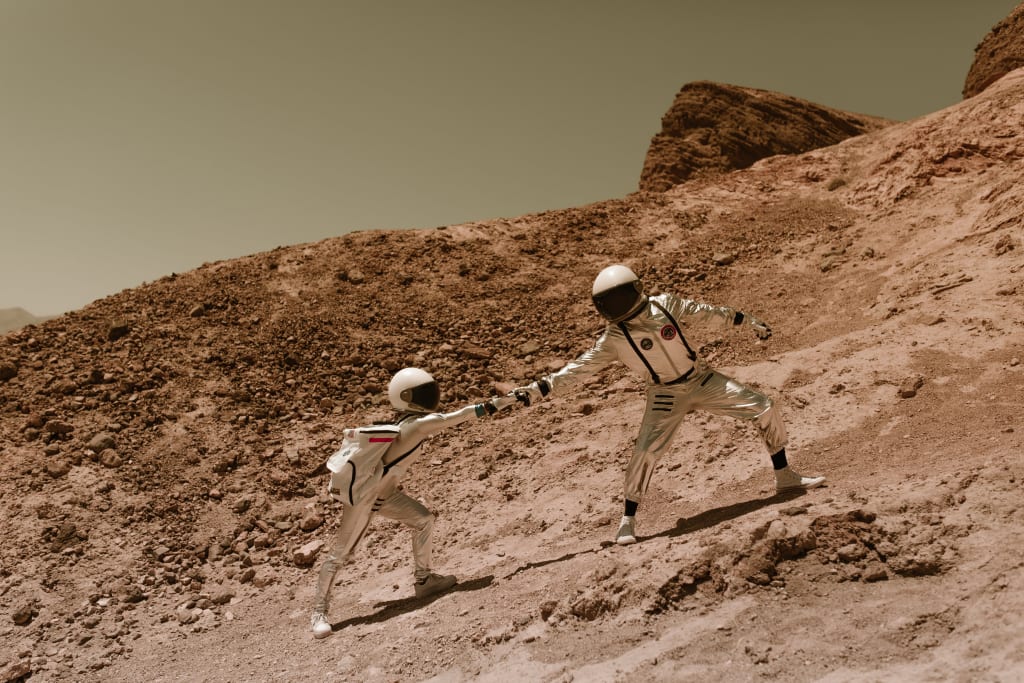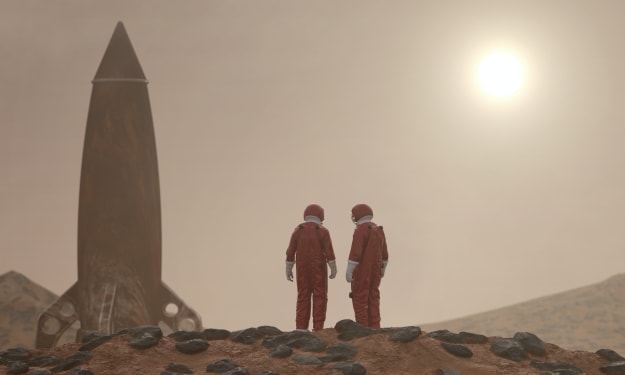"Mars: The Languid Dance of Time - Unraveling the Longer Days on the Red Planet".
The fact Days are longer on Mars.

Introduction:
In the cosmic theater of our solar system, each planet spins and orbits to its rhythm, conducting a celestial symphony that shapes the experience of time on its surface. Mars, the fourth planet from the Sun, stands out with a peculiar cadence in this orchestration. Days on Mars are longer than those on Earth, and this cosmic dance of time invites us to explore the mechanisms behind this temporal divergence and the implications it carries for the Red Planet's climate, geology, and potential for future exploration.
Chapter 1: The Dance of Rotation.
Mars, like Earth, experiences the dance of rotation as it spins on its axis. However, the rhythm of this celestial ballet is distinct on the Red Planet. A Martian day, often referred to as a "sol," is approximately 24.6 hours long, making it roughly 40 minutes longer than an Earth day. This extended day length is a consequence of Mars' slower rotation on its axis.
The rotation of Mars, which takes about 24.6 hours to complete, contributes to the unique temporal character of the planet and has significant implications for its climate and atmospheric dynamics.
Chapter 2: Axial Tilt and Seasons.
Mars, similar to Earth, experiences seasons due to its axial tilt. The Red Planet's axial tilt is approximately 25.2 degrees, comparable to Earth's 23.5 degrees. This tilt results in distinct seasons as different parts of Mars receive varying amounts of sunlight throughout the Martian year, which lasts about 687 Earth days.
The longer days on Mars influence the duration and intensity of its seasons, impacting temperature variations, atmospheric circulation patterns, and the behavior of polar ice caps. Understanding the interplay between Martian axial tilt and extended days contributes to our comprehension of the planet's climate dynamics.
Chapter 3: The Impact on Martian Weather.
The elongated Martian day has profound effects on the planet's weather patterns. During a Martian day, temperatures can exhibit significant fluctuations, with daytime highs and nighttime lows varying more widely than on Earth. This is due to the extended period of solar heating and cooling.
Understanding the Martian weather, with its distinct diurnal variations, is essential for designing spacecraft and habitats that can withstand the temperature extremes and atmospheric conditions that characterize the Red Planet.
Chapter 4: The Role of the Martian Atmosphere.
Mars, with its thinner atmosphere compared to Earth, experiences different interactions between sunlight and its surface. The longer days on Mars contribute to the planet's distinctive rusty-red hue, as sunlight interacts with the iron oxide (rust) present in the Martian soil, creating a unique atmospheric scattering effect.
The atmospheric dynamics on Mars, influenced by the extended day length, play a role in shaping the planet's climate, dust storms, and the behavior of clouds. Studying these processes provides valuable insights into the complex interplay between the Martian atmosphere and the extended solar day.
Chapter 5: Impact on Geological Processes.
The prolonged exposure to sunlight during a Martian day has implications for the planet's geological processes. Mars exhibits a diverse array of geological features, from ancient river valleys to towering volcanoes. The longer days on Mars influence temperature-driven processes, such as thermal expansion and contraction of rocks, which may contribute to the creation of fractures and other geological structures.
The study of Martian geology, informed by the unique temporal characteristics of the planet, enhances our understanding of how surface features have evolved over geological time.
Chapter 6: Adaptations for Exploration.
As humanity sets its sights on exploring Mars, the longer days pose both challenges and opportunities for future missions. Rovers and landers, such as the Mars rovers Spirit, Opportunity, Curiosity, and Perseverance, have operated within the constraints of Martian time. The extended day length affects power generation from solar panels, the timing of scientific observations, and the planning of daily activities.
Future human missions to Mars will need to consider the implications of longer days for spacecraft design, power systems, and the adaptation of human explorers to the unique temporal rhythm of the Red Planet.
Chapter 7: Human Experience of Time on Mars.
As we envision the prospect of human colonization and exploration of Mars, the concept of time takes on new dimensions. The longer days on Mars mean that a sol, or Martian day, lasts approximately 24 hours and 40 minutes. Human settlers on Mars will need to adapt to this altered daily rhythm, which may have implications for sleep patterns, work schedules, and overall well-being.
Understanding the psychological and physiological effects of extended days will be crucial for planning and executing successful long-term human missions to Mars.
Conclusion:
Mars, with its longer days, offers a distinctive rhythm in the cosmic tapestry of our solar system. The extended rotation period of the Red Planet influences its climate, weather patterns, and geological processes. As we continue to explore and contemplate the possibilities of human habitation on Mars, the enigmatic dance of time on the Red Planet invites us to embrace a new temporal cadence—one shaped by the longer, languid days that define this distant world.





Comments
There are no comments for this story
Be the first to respond and start the conversation.